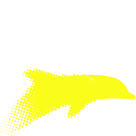Gravimetry is the science which measures and studies gravitational acceleration, i.e. the acceleration exerted on a body at rest on the Earth's surface. Gravitational acceleration therefore results from the gravitational force exerted by the Earth, but also by other astronomical bodies (Moon, Sun, planets), and the centrifugal effect due to the rotation of the Earth or planet.
A gravimeter is an instrument, based on the principle of a free-falling object in a vacuum, which measures the real value of the gravitational acceleration at any point.
By measuring gravitational acceleration, the distribution of masses is also measured, which allows the internal structure of the subsoil to be deduced. Gravimetry is therefore a powerful tool for geophysics and in particular mineral and oil prospecting.
(source: www.futura-sciences.com)
Examples of sensors
- Askania GSS2 from 1969 to 1981 onboard the R/V JEAN CHARCOT
- Bodenseewerk KSS30 acquired in 1981 and fitted onboard the R/V JEAN CHARCOT from 1983 to 1989 then onboard the R/V ATALANTE from 1990 to 2003
- Lockeed Martin BGM5 which was fitted onboard the R/V ATALANTE from December 1998 (AGUADOMAR cruise) to 2006 then from July 2008 to the present day
- Bodenseewerk KSS31 which was fitted onboard the R/V Suroît from 15th November 2000 to 31st December 2002 under a loan agreement between Ifremer and SHOM. It was then used alternately onboard the R/V Atalante and the R/V Pourquoi pas?
File types
File type |
Vessel/Sensor |
Extension |
Date |
Format |
Gravimeter |
Pourquoi pas ? |
from 2006 |
NetCDF |
|
gravimetry data processed |
The Atalante, the Suroît, the Pourquoi pas ? |
- |
Ascii |
More information on file formats for geophysical data archived at SISMER.
Gravimetry data correction
Reference Gravity Stations
The measurements are tied to the values of the Reference Gravity Stations of the International Gravity Standardization Net 1971 (IGSN 71).
Ties are also made to stations which are not included in the IGSN 71. The gravity values expressed in the POTSDAM system are corrected to be included in the IGSN 71 reference system.
For more information:
- see the base ties indicated
- on the website of the International Gravimetric Bureau
Drift correction
i.e. Gv = measurement by the gravimeter at time T.
Prior to the cruise, a tie is made in port n°1 where we measure:
- Gv1, the gravimetric measurement value in port
- Grefnav1, the measurement of the IGSN 71 point of reference in relation to the gravimeter onboard the vessel
- T1, the time (or date) of the measurement
A new tie is made in port n°2 after the cruide, where we measure:
- Gv2, the gravimetric measurement value in port
- Grefnav2, the measurement of the IGSN 71 point of reference in relation to the gravimeter onboard the vessel
- T2, the time (or date) of the measurement
therefore Gzero1 = Grefnav1-Gv1 and Gzero2 = Grefnav2-Gv2 the zero values of the marine gravimeter in ports 1 and 2 respectively [not to be confused with G0, G1 and G2 of terrestrial gravimeters which appear in the base ties).
The time drift, which is assumed to be constant throughout the cruise, is:
(1) Der = (Gzero2 - Gzero1) / (T2 - T1)
To calculate the absolute gravity Gabs from the measured gravity Gv at time T, the following calculation is made:
(2) Gabs = Gzero1 + Gv x Der x (T - T1)
Note to users of CARAIBES software: The correspondence with the data import settings is:
- "Gravity" = Grefnav = Gnav in base ties
- "Observed value"= Gv
Variation in the spring stiffness coefficient
The spring stiffness coefficient evolves. This creates errors: the greater the latitude of the trajectory, the greater the error. This evolution must therefore be taken into account in the absolute gravity calculation from gravimeter measurements. A stiffness coefficient Kstiffness is therefore introduced:
Formulas (1) and (2) above become:
(3) Der = ((Grefnav2 - Grefnav1) + Kstiffness x (Gv2 - Gv1)) / (T2 - T1)
(4) Gabs = Gzero1 + Kstiffness x Gv + Der x (T - T1)
Sea state and gravimeter recording times
- KSS 30
Real-time acquisition is performed with the sea state parameter of the KSS 30 "Sea State" = 2, which corresponds to a "smooth" sea, whatever the actual sea state. The corresponding real-time anti-aliasing Bessel filters and the time constant of the gravimeter delay the recording of the measurement. Based on GENAVIR analyses, a 120-second delay should be deducted from the recording time of real-time measurements. This is the value that is currently applied by SISMER to KSS 30 data. The filtering times obtained more recently by SHOM are:
- Sea State 2: 109.3 s
- Sea State 3: 132.8 s
- Sea State 4: 181.8 s
- KSS 31
From 2000 to July 2007, the KSS 31 was run at "Sea State" = 3 (except during the BLASON 2 cruise from 9/8/2002 to 9/9/2002 when SS = 2). The Bessel filters and the time constant of the gravimeter introduce a recording delay. The time delay applied by SISMER is 130 seconds.
From July 2007, the KSS 31 was run at "Sea State" = 2. The time delay applied by SISMER is 120 seconds. The filtering times obtained by SHOM are:
- Sea State 2: 101.0 s
- Sea State 3: 124.5 s
- Sea State 4: 173.5 s
Henceforth, KSS31 is run at "Sea State" = 2.
- BGM5
The BGM5 filters differ from those of the KSS and do not introduce a recording delay. On the other hand, the time attributed to the filtered measurement is deferred with a 304.5 second delay.
Contact
For all further enquiries, please contact the SISMER service (sismer@ifremer.fr).
